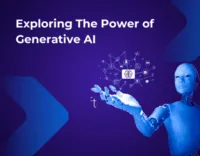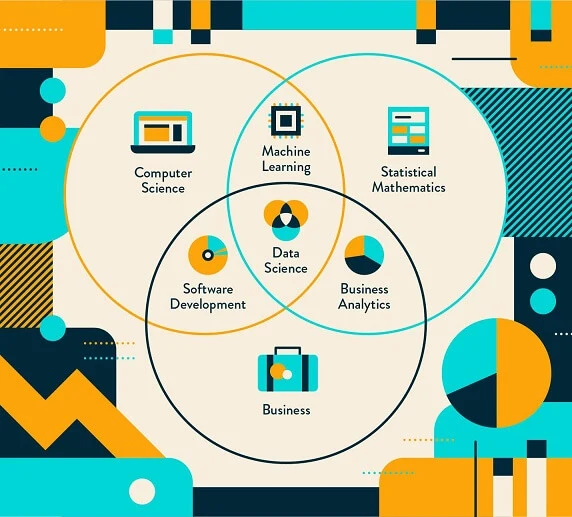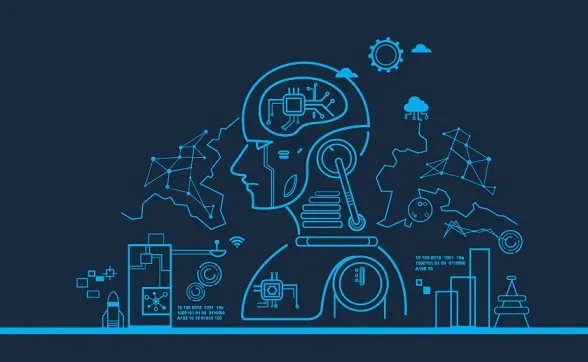Artificial Intelligence and Machine Learning are the buzzwords of this century. Their wide range of applications has changed the facets of technology in every field, ranging from Healthcare, Manufacturing, Business, Education, Banking, Information Technology, and what not!
Artificial intelligence and machine learning are the part of computer science that are correlated with each other. These two technologies are the most trending technologies which are used for creating intelligent systems.
You can think of deep learning, machine learning, and artificial intelligence as a set of Russian dolls nested within each other, beginning with the smallest and working out. Deep learning is a subset of machine learning, and machine learning is a subset of AI, which is an umbrella term for any computer program that does something smart. In other words, all machine learning is AI, but not all AI is machine learning, and so forth
In this blog, we will explore these buzzwords and learn the difference between them.
Artificial Intelligence
Artificial intelligence is a field of computer science that makes a computer system that can mimic human intelligence. It is comprised of two words "Artificial" and "intelligence", which means "a human-made thinking power." Hence, we can define it as,
- A branch of computer science dealing with the simulation of intelligent behavior in computers.
- The capability of a machine to imitate intelligent human behavior.
- A computer system can perform tasks that normally require human intelligence, such as visual perception, speech recognition, decision-making, and translation between languages.
There are a lot of ways to simulate human intelligence, and some methods are more intelligent than others.
AI can be a pile of if-then statements, or a complex statistical model mapping raw sensory data to symbolic categories. The if-then statements are simply rules explicitly programmed by a human hand. Taken together, these if-then statements are sometimes called rules engines, expert systems, knowledge graphs, or symbolic AI. Collectively, these are known as Good, Old-Fashioned AI (GOFAI).
Usually, when a computer program designed by AI researchers succeeds at something – like winning at chess – many people say it’s “not really intelligent” because the algorithm’s internals is well understood. The critics think intelligence must be something intangible, and exclusively human. A wag would say that true AI is whatever computers can’t do yet.
Artificial intelligence (AI), machine learning, and deep learning are three terms often used interchangeably to describe software that behaves intelligently. However, it is useful to understand the key distinctions among them.
Where are we today with AI?
With AI, you can ask a machine questions – out loud – and get answers about sales, inventory, customer retention, fraud detection, and much more. The computer can also discover information that you never thought to ask. It will offer a narrative summary of your data and suggest other ways to analyze it. It will also share information related to previous questions from you or anyone else who asked similar questions. You’ll get the answers on a screen or just conversationally.
How will this play out in the real world? In health care, treatment effectiveness can be more quickly determined. In retail, add-on items can be more quickly suggested. In finance, fraud can be prevented instead of just detected. And so much more.
In each of these examples, the machine understands what information is needed, looks at relationships between all the variables, formulates an answer – and automatically communicates it to you with options for follow-up queries.
We have decades of artificial intelligence research to thank for where we are today. And we have decades of intelligent human-to-machine interactions to come.
Understanding Vertical AI: Applications and Industry Impact
These are services focus on a single job, whether that’s scheduling meetings, automating repetitive work, etc. Vertical AI Bots perform just one job for you and do it so well, that we might mistake them for a human.
Horizontal AI
These services are such that they can handle multiple tasks. There is no single job to be done. Cortana, Siri, and Alexa are some of the examples of Horizontal AI. These services work more massively as the question and answer settings, such as “What is the temperature in New York?” or “Call Alex”. They work for multiple tasks and not just for a particular task entirely.
AI is achieved by analyzing how the human brain works while solving an issue and then using that analytical problem-solving techniques to build complex algorithms to perform similar tasks. AI is an automated decision-making system, which continuously learns, adapts, suggests, and takes actions automatically. At the core, they require algorithms that can learn from their experience. This is where Machine Learning comes into the picture.
Three broad categories of Artificial Intelligence
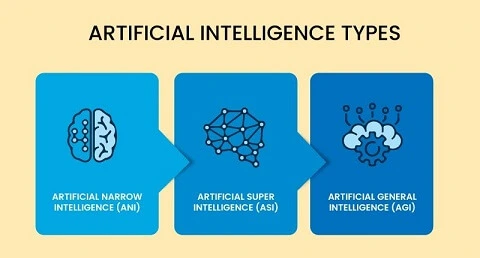
- Artificial Narrow Intelligence: Artificial Narrow Intelligence systems are designed and trained to complete one specific task and are often termed as Weak AI / Narrow AI. The chatbots that answer questions based on user input, voice assistants like Siri, Alexa, and Cortana, facial recognition systems, AI systems that search the internet, are examples of Weak AI. They are intelligent at performing the specific tasks that they are programmed to do so.
- Artificial General Intelligence: Artificial General Intelligence is when the AI systems/machines would perform on par with another human. This also means the ability of the machine to interpret and understand human tone and emotions and act accordingly. This is also called Strong AI and we are still scratching the surface of Strong AI. As Machine Learning capabilities continue to evolve, AI will progress, and we will reach there soon.
- Artificial Super Intelligence: Artificial Super Intelligence/Super AI is when an Artificial Intelligent machine would become self-aware and surpass human’s intelligence and ability. Although there is so much exciting research happening around this area, there are warnings from scientists as well.
Machine Learning
Artificial Intelligence and Machine Learning are much trending and also confused terms nowadays. Machine Learning (ML) is a subset of Artificial Intelligence. ML is a science of designing and applying algorithms that can learn things from past cases. If some behavior exists in past, then you may predict if or it can happen again. This means if there are no past cases then there is no prediction.
ML can be applied to solve tough issues like credit card fraud detection, enable self-driving cars, and face detection and recognition. ML uses complex algorithms that constantly iterate over large data sets, analyzing the patterns in data and facilitating machines to respond to different situations for which they have not been explicitly programmed. The machines learn from history to produce reliable results. The ML algorithms use Computer Science and Statistics to predict rational outputs.

Classification of ML
- Supervised Learning: In supervised learning, training datasets are provided to the system. Supervised learning algorithms analyze the data and produce an inferred function. The correct solution thus produced can be used for mapping new examples. Credit card fraud detection is one of the examples of a Supervised Learning algorithm.
- Unsupervised Learning: Unsupervised Learning algorithms are much harder because the data to be fed is unclustered instead of datasets. Here the goal is to have the machine learn on its own without any supervision. The correct solution to any problem is not provided. The algorithm itself finds the patterns in the data. One of the examples of supervised learning is Recommendation engines which are there on all e-commerce sites or also on Facebook friend request suggestion mechanism..
- Reinforcement Learning: This type of Machine Learning algorithm allows software agents and machines to automatically determine the ideal behavior within a specific context, to maximize its performance. Reinforcement learning is defined by characterizing a learning problem and not by characterizing learning methods. Any method which is well suited to solve the problem, we consider being the reinforcement learning method. Reinforcement learning assumes that a software agent i.e. a robot, or a computer program, or a bot, connects with a dynamic environment to attain a definite goal. This technique selects the action that would give the expected output efficiently and rapidly.
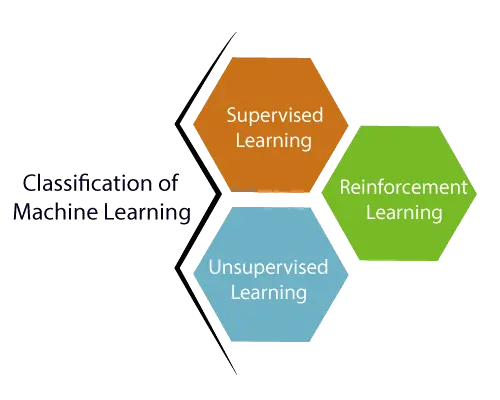
Artificial Intelligence and Machine Learning always interest and surprises us with their innovations. AI and Ml have reached industries like Customer Service, E-commerce, Finance and where not. By 2020, 85% of customer interactions will be managed without a human. There are certain implications of AI and ML to incorporate data analysis like Descriptive analytics, Prescriptive Analytics, and Predictive analytics.
Applications of AI and ML
Some of the top applications of AI & MI include the following:
- Image Recognition: Image recognition is one of the most common applications of machine learning. It is used to identify objects, persons, places, digital images, etc. The popular use case of image recognition and face detection is the Automatic friend tagging suggestion
- Dynamic Pricing: Setting the right price for a good or service is an old problem in economic theory. There are a vast amount of pricing strategies that depend on the objective sought. Be it a movie ticket, a plane ticket, or cab fares, everything is dynamically priced. In recent years, artificial intelligence has enabled pricing solutions to track buying trends and determine more competitive product prices.
- Speech Recognition: While using Google, we get an option of "Search by voice," which comes under speech recognition, and it's a popular application of machine learning. Speech recognition is a process of converting voice instructions into text, and it is also known as "Speech to text", or "Computer speech recognition."
- Self-Driving Cars: Well, here is one of the coolest applications of Machine Learning. It’s here and people are already using it. Machine Learning plays a very important role in Self Driving Cars and I’m sure you guys might have heard about Tesla. The leader in this business and their current Artificial Intelligence is driven by hardware manufacturer NVIDIA, which is based on an Unsupervised Learning Algorithm.
- Traffic prediction: If we want to visit a new place, we take the help of Google Maps, which shows us the correct path with the shortest route and predicts the traffic conditions. It predicts the traffic conditions such as whether traffic is cleared, slow-moving, or heavily congested.
- Product recommendations: Machine learning is widely used by various e-commerce and entertainment companies such as Amazon, Netflix, etc., for product recommendations to the user. Whenever we search for some product on Amazon, then we started getting an advertisement for the same product while internet surfing on the same browser, and this is because of machine learning.
- Google Translate: Remember the time when you traveled to a new place and you find it difficult to communicate with the locals or finding local spots where everything is written in a different language. Well, those days are gone now. Google’s GNMT(Google Neural Machine Translation) is a Neural Machine Learning that works on thousands of languages and dictionaries, uses Natural Language Processing to provide the most accurate translation of any sentence or words
- Fraud Detection: Experts predict online credit card fraud to soar to a whopping $32 billion in 2020. That’s more than the profit made by Coca-Cola and JP Morgan Chase combined. That’s something to worry about. Fraud Detection is one of the most necessary Applications of Machine Learning
- Virtual Personal Assistants: As the name suggests, Virtual Personal Assistants assist in finding useful information, when asked via text or voice
- Stock Market trading: Machine learning is widely used in stock market trading. In the stock market, there is always a risk of ups and downs in shares, so for this machine learning's long short-term memory neural network is used for the prediction of stock market trends.
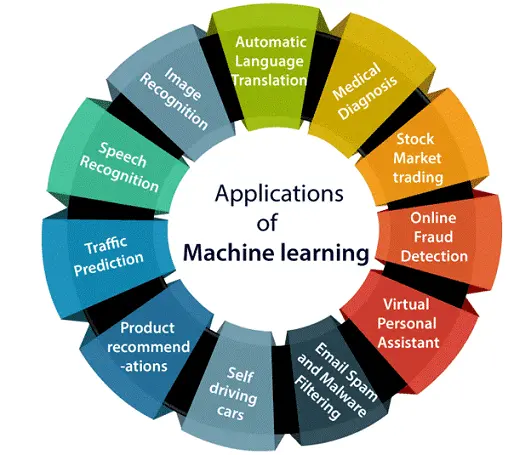
Just like anything else, Machine Learning has its shortcomings and that is where Deep Learning comes into the picture!
Machine Learning models don’t perform very well when the volume and complexity of data increase multifold. They need some sort of human intervention and guidance whereas Deep Learning models learn from data and previous experience and correct themselves progressively.
AI vs ML
| Artificial Intelligence | Machine learning |
|---|---|
| Artificial intelligence is a technology that enables a machine to simulate human behavior. | Machine learning is a subset of AI which allows a machine to automatically learn from past data without programming explicitly. |
| The goal of AI is to make a smart computer system like humans to solve complex problems. | The goal of ML is to allow machines to learn from data so that they can give accurate output. |
| In AI, we make intelligent systems to perform any task like a human. | In ML, we teach machines with data to perform a particular task and give an accurate result. |
| AI has a very wide range of scope. | Machine learning has a limited scope. |
| AI is working to create an intelligent system that can perform various complex tasks. | Machine learning is working to create machines that can perform only those specific tasks for which they are trained. |
| The main applications of AI are Siri, customer support using catboats, Expert System, Online game playing, an intelligent humanoid robot, etc. | The main applications of ML are the Online recommender system, Google search algorithms, Facebook auto friend tagging suggestions, etc. |
| AI completely deals with Structured, semi-structured, and unstructured data. | ML deals with Structured and semi-structured data. |
What’s Next for AI?
The advances made by researchers at DeepMind, Google Brain, OpenAI, and various universities are accelerating. AI can solve harder and harder problems better than humans can.
This means that AI is changing faster than its history can be written, so predictions about its future quickly become obsolete as well. Are we chasing a breakthrough like nuclear fission (possible), or attempt to wring intelligence from silicon more like trying to turn lead into gold
Given that the power of AI progresses hand in hand with the power of computational hardware, advances in computational capacity, such as better chips or quantum computing, will set the stage for advances in AI. On a purely algorithmic level, most of the astonishing results produced by labs such as DeepMind come from combining different approaches to AI, much as AlphaGo combines deep learning and reinforcement learning. Combining deep learning with symbolic reasoning, analogical reasoning, Bayesian and evolutionary methods all show promise.
Finally, there are the pragmatists, plugging along at the math, struggling with messy data, scarce AI talent, and user acceptance. They are the least religious of the groups making prophecies about AI – they just know that it’s hard.
Read more blogs here

